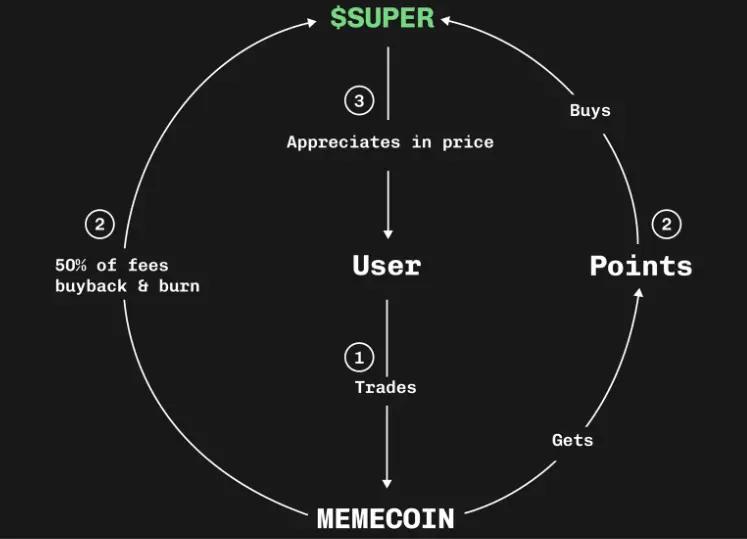Author: WOO X Research
Pump Fun Lacks Momentum, Token Deployment Drops Over 60%
As is well known, Solana's performance this cycle has been closely tied to Pump Fun, which allows anyone to issue tokens at a very low cost, industrializing asset issuance. At the peak in late January this year, about 60,000 tokens were deployed per day, generating revenue of up to $15 million per day. In terms of trading volume, Pump Fun-related tokens accounted for more than 50% of Solana's total.
At the macro level, there have been various negative events: the overall market downturn, Trump's family's coin draining market attention, countries and celebrities following suit to issue coins, and the final straw being Argentina President Milei's Libra, which harvested the expectations of the entire crypto market in less than 3 hours.
Regarding Pump Fun itself, it has been constantly selling its SOL holdings since its launch. Since 2025, the platform has transferred 1,322,830 SOL, worth about $260 million, to the Kraken exchange.
Recently, they have also been testing Pump Fun Swap, planning to launch their own Dex to replace the previous liquidity deployment on the Raydium Bonding Curve, revealing their "winner-takes-all" mentality.
Looking at recent data, the number of deployed tokens has plummeted from the peak of 60,000 to around 22,000, returning to the level of October 2024, which was the starting point of the meme and AI agent boom.
Pump Fun's mechanism design is more like "fast food", with prices more easily manipulated. In a market with ample liquidity, it can bring endless wealth creation myths, but in a market downturn with lack of liquidity, the tokens also face problems such as market cap downward revision and less sustained growth than before. If Pump Fun's original mechanism is combined with DeFi elements, can its sustainability be extended?
Reference: Dune

Super Exchange = Pump Fun with Smoother Pricing
Super Exchange is also a token issuance platform, using the Infinite Bonding Curve pricing mechanism, which is different from Pump Fun's on-chain Bonding Curve and off-chain AMM mechanism. The feature of Super Exchange is that the price fluctuates more smoothly, preventing early investors from heavily accumulating tokens and controlling the market.
For example, the cost of purchasing 80% of a token's supply on Super Exchange is 40,269 times higher than on Pump.fun, while Pump.fun is only 15 times higher, meaning that if insider addresses want to collect tokens to manipulate the market, the cost of malicious behavior is much higher.
Reference: super.exchange

How to Participate in Super Exchange?
The platform token SUPER has a total supply of 1 billion, 100% allocated to the community. 50% of the platform's transaction fees are used to buy back and burn SUPER in real-time. However, users cannot directly purchase SUPER, but must first buy platform meme tokens to earn points, and then use the points to purchase SUPER, which can then be redeemed for SOL.
Reference: super.exchange

After understanding the game rules, there are mainly two ways to participate:
- Boost Trading Volume: The trading points earned depend on your trading volume and the performance of the traded tokens (market cap × logarithm of the number of traders). The larger the trading volume and the more active the token (higher Token Parameter), the more points you will earn to purchase SUPER.
- Buy & Hold Top Tokens: As mentioned above, the overall design encourages users to participate in trading popular tokens, with liquidity and trading volume concentrated on top tokens. To maintain the heat, the price must be maintained or even rise. Therefore, if you are optimistic about the future development of Super Exchange, buying and holding top tokens is also an option.
Therefore, if the flywheel of this model runs successfully, the following scenario should emerge:
Traders boost trading volume on top tokens (SEND) -> SEND token price rises -> 50% of transaction fees used to buy back SUPER -> Earn points to purchase SUPER -> SUPER price rises -> Attract more people to trade SEND.
From the above transmission chain, the most important factor is whether the SEND token price can steadily rise, which determines the overall platform's trading volume.
Conclusion: Not a LaunchPad, but a Capital Game
Super Exchange has exclusivity in its inherent design, meaning that only top tokens can enjoy the highest trading volume and attention, while other tokens are destined to be ignored due to the points setting. Although Super Exchange claims to be a fairer LaunchPad, it is actually setting up a dual-token mechanism of top tokens and SUPER to boost each other. If the market cap difference between the top tokens and other internal tokens is too large, the existence of the remaining tokens will be completely meaningless.
If other tokens want to compete for the top token position and enjoy the flywheel effect with SUPER, whether by spending their own costs to manipulate the market or using more marketing tactics to attract market attention, it is not something that ordinary retail investors can compete with when creating their own tokens. Therefore, the "fairness" claimed by Super Exchange only appears in the mathematical formula calculations, while in the power of asset issuance, it has extremely high exclusivity. Emphasizing the solution to the Pump Fun problem and advocating fairness is debatable, but using Ponzi, money-making effects, mining, etc. as the main axis may be more appropriate.








